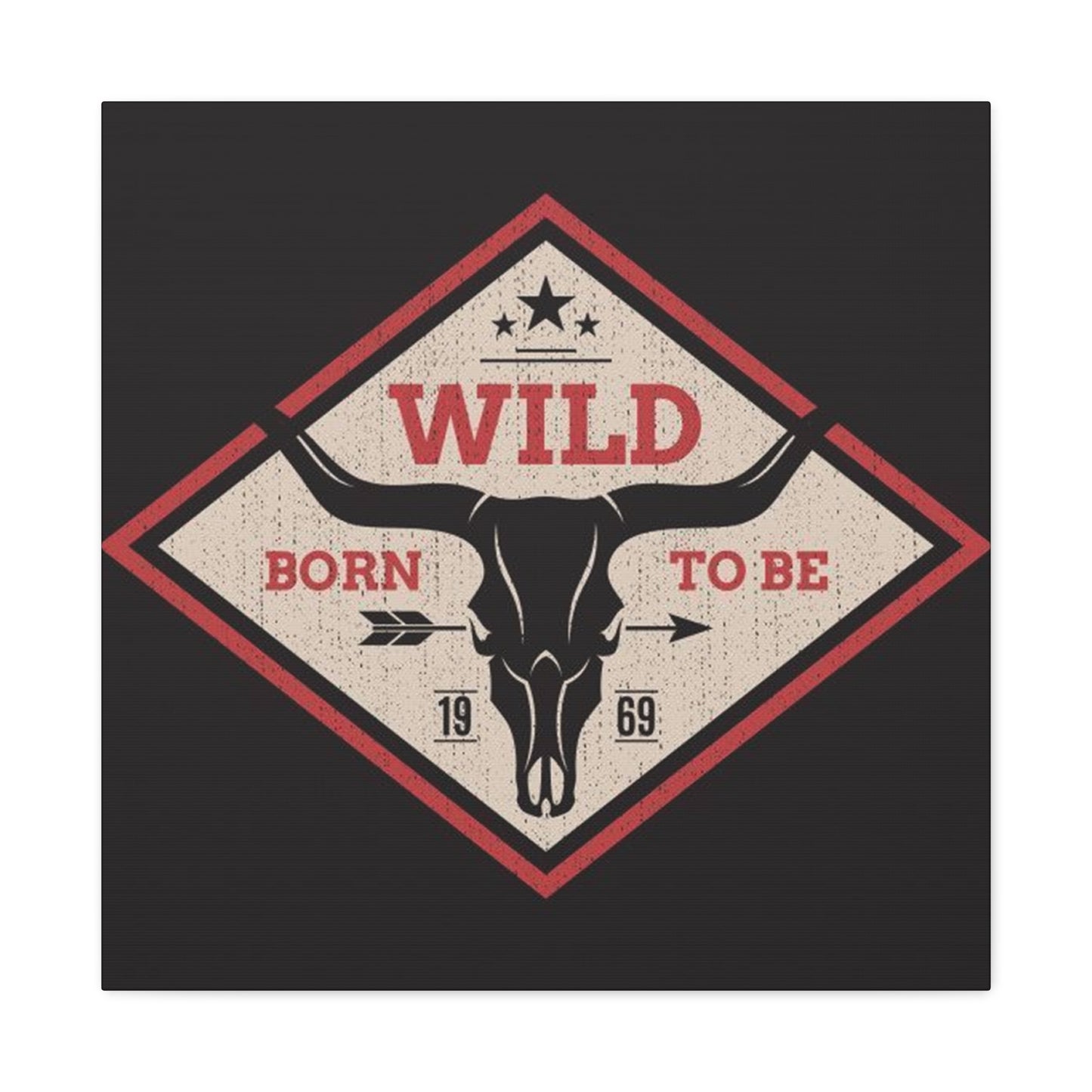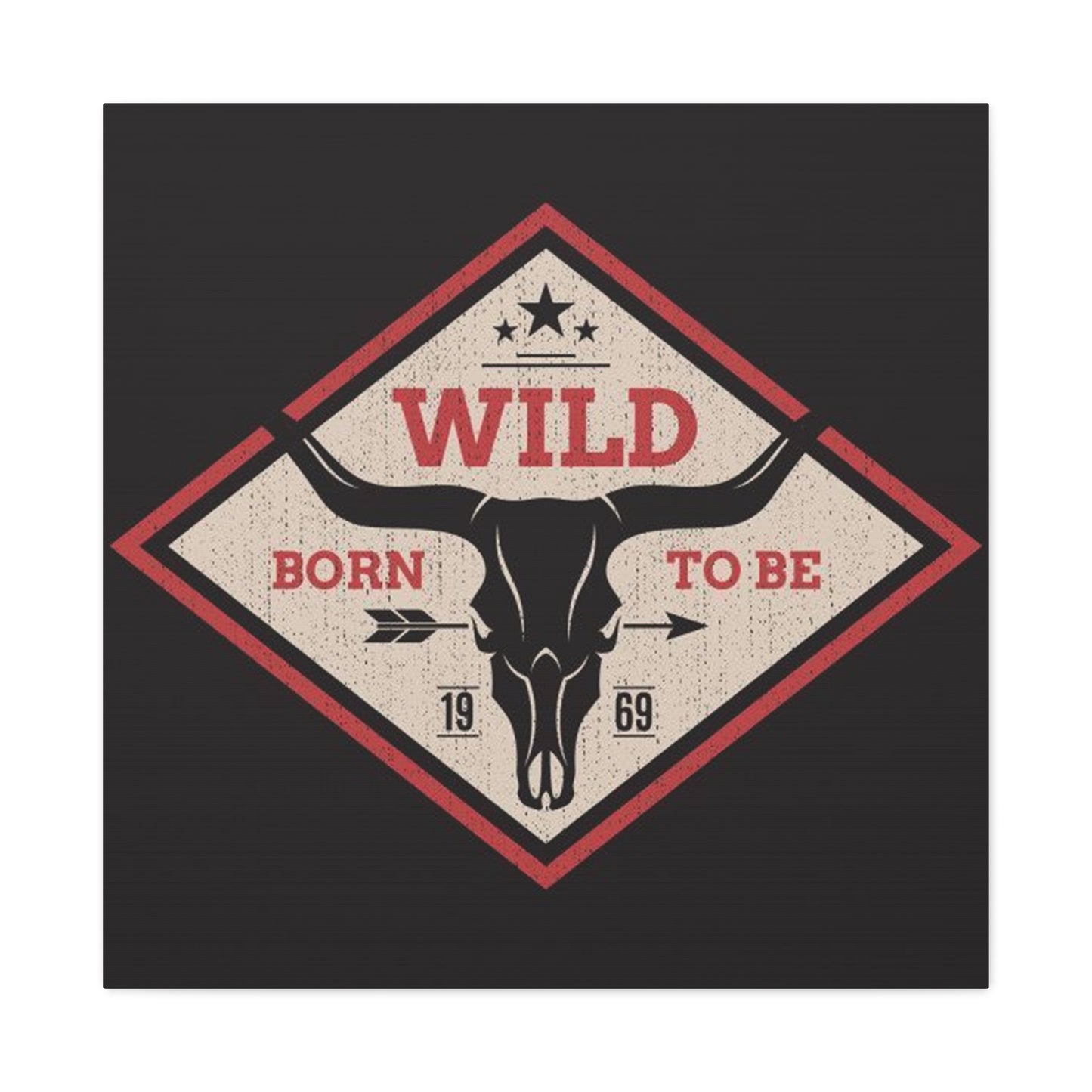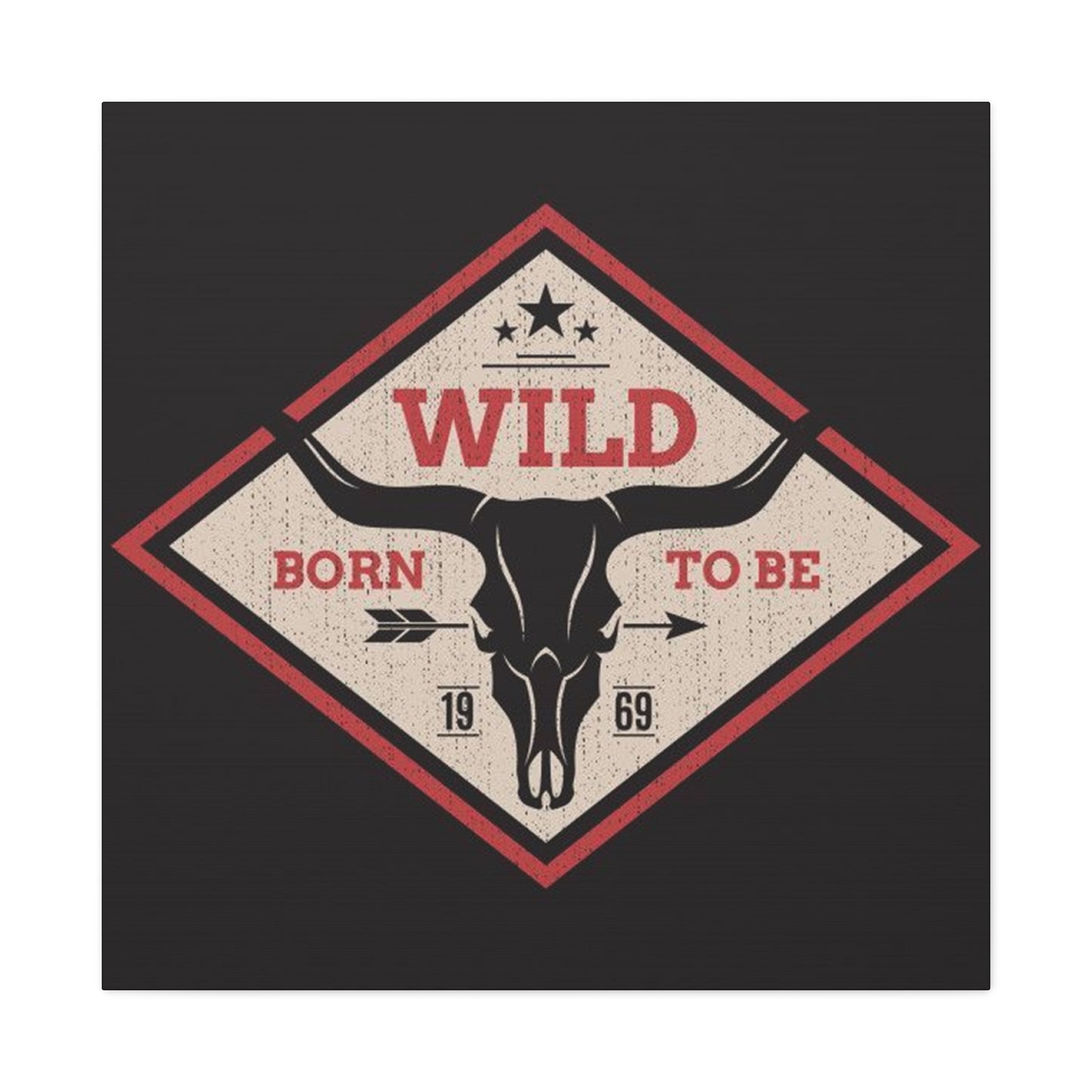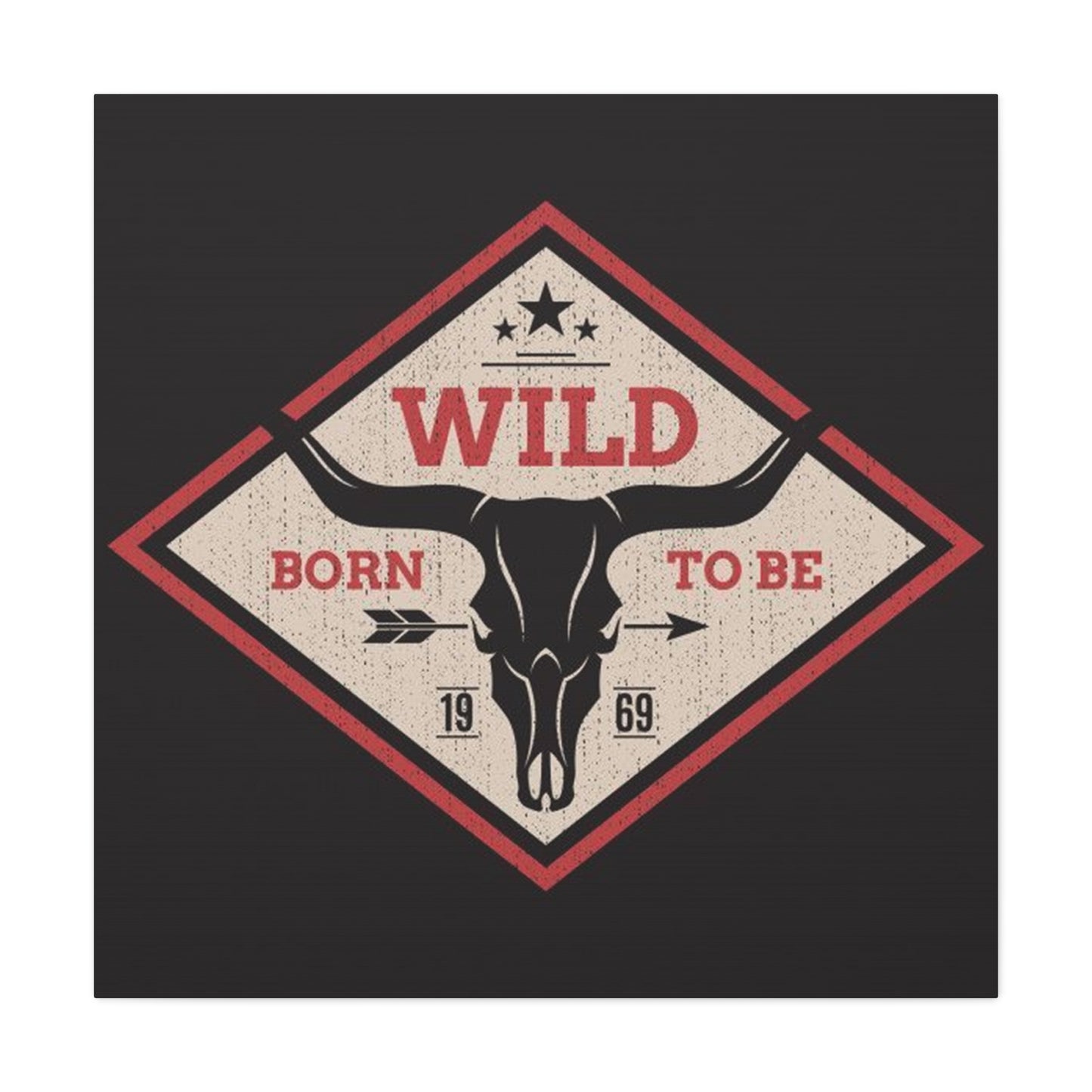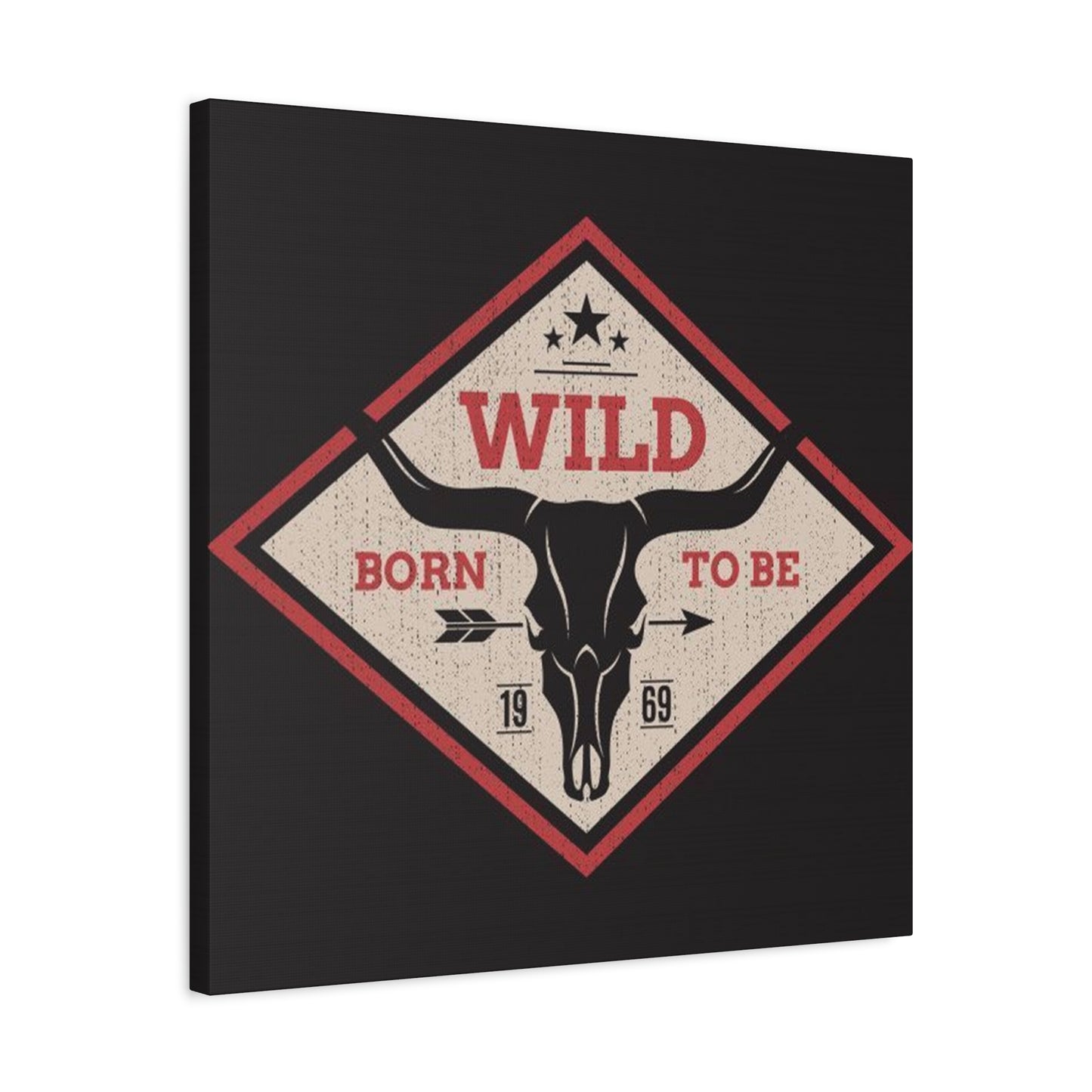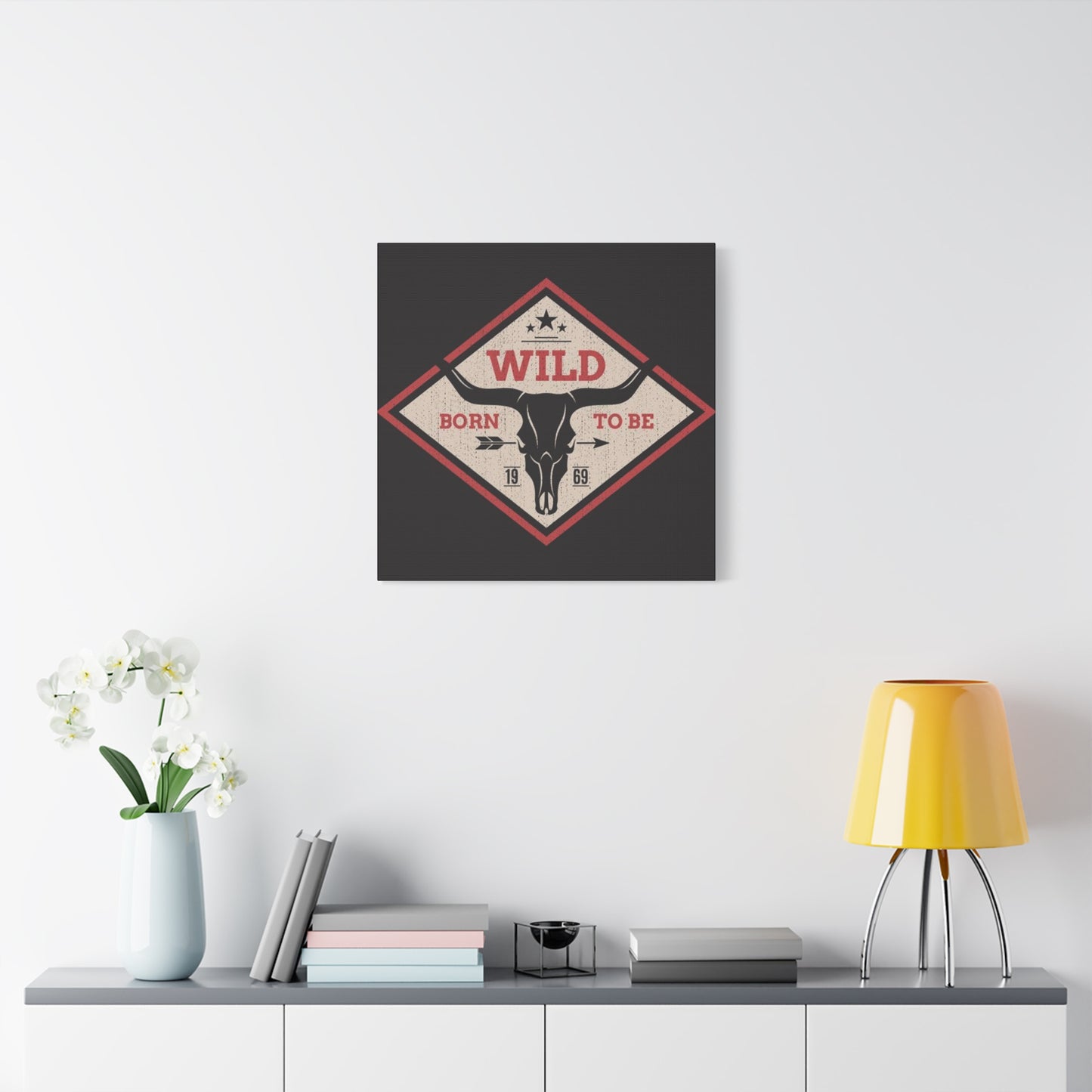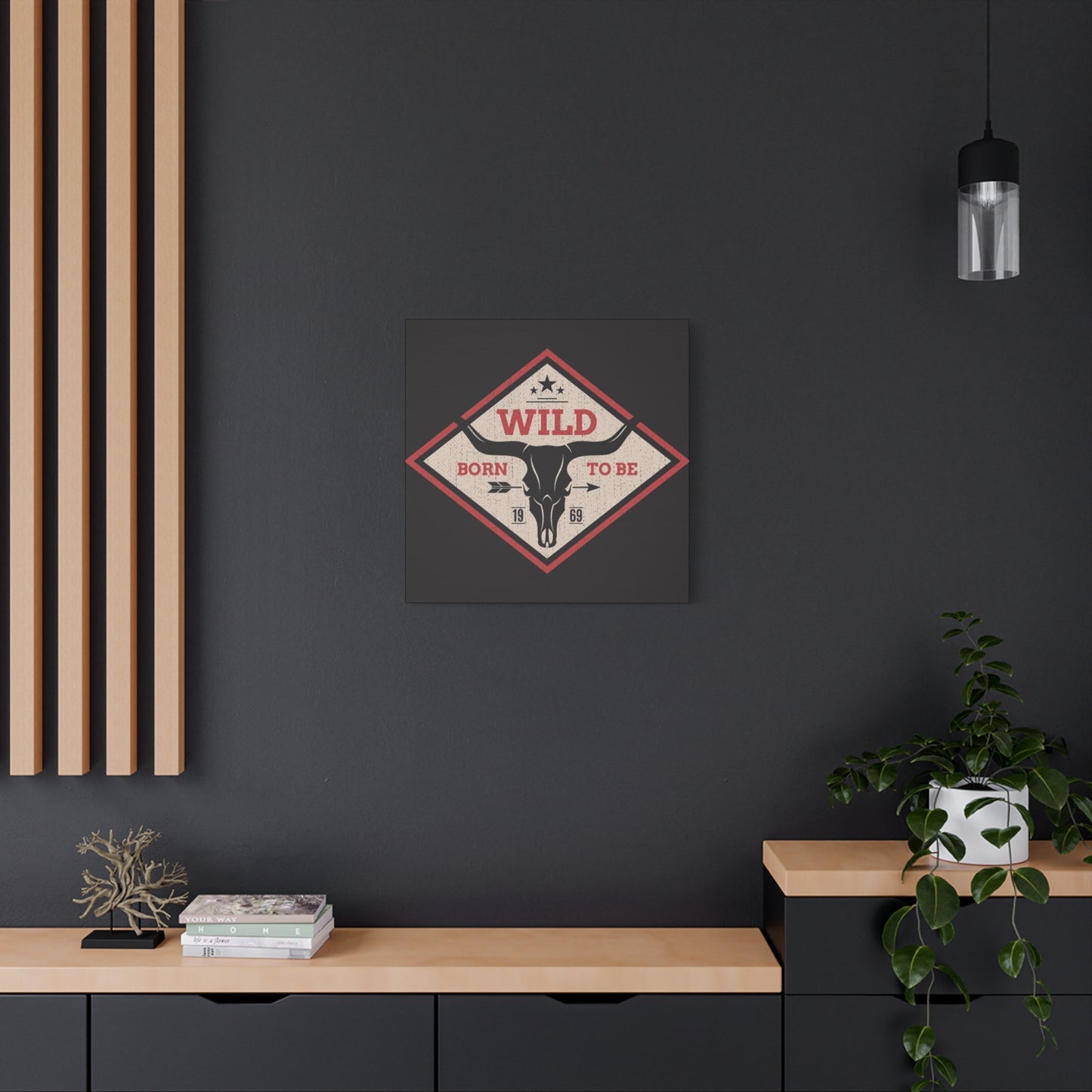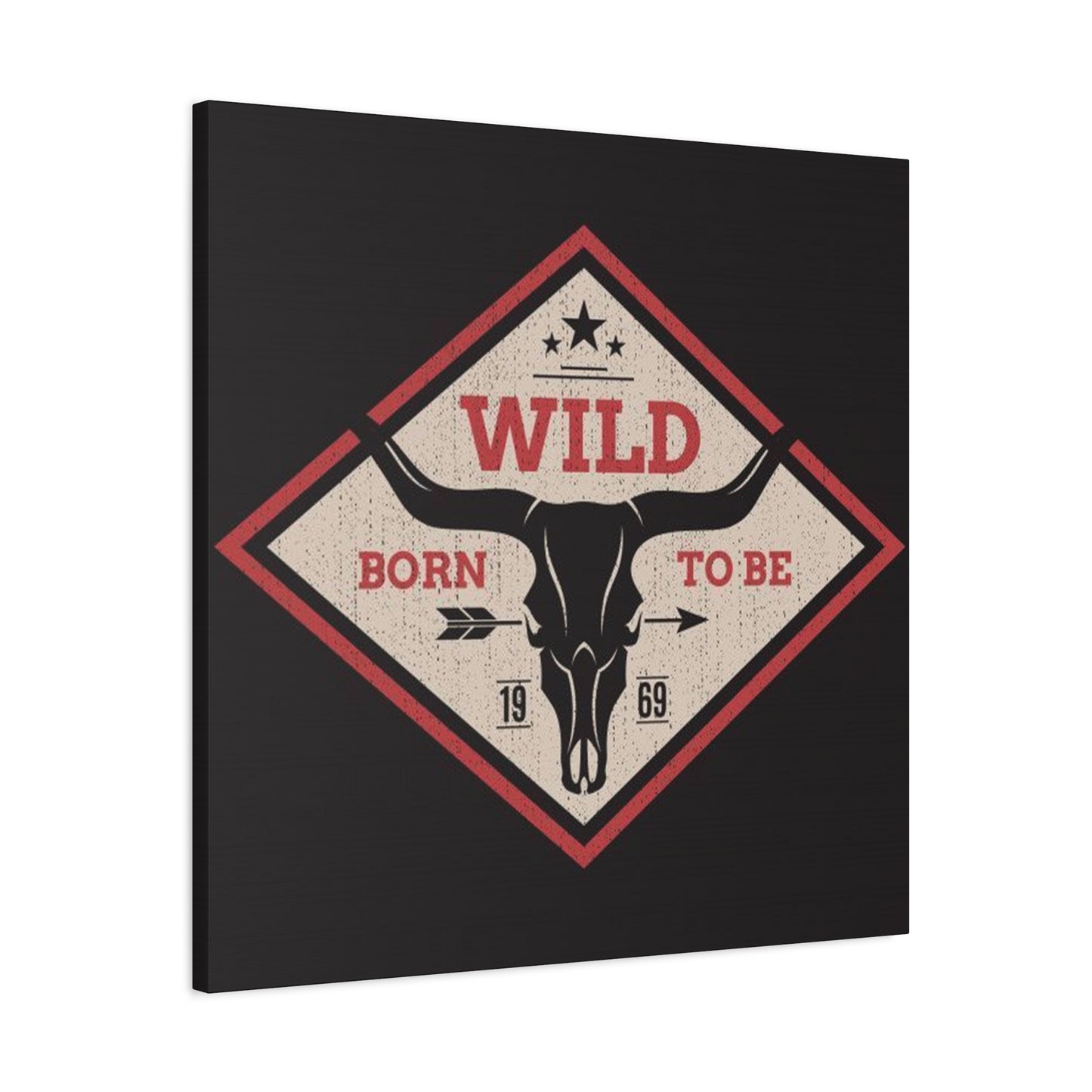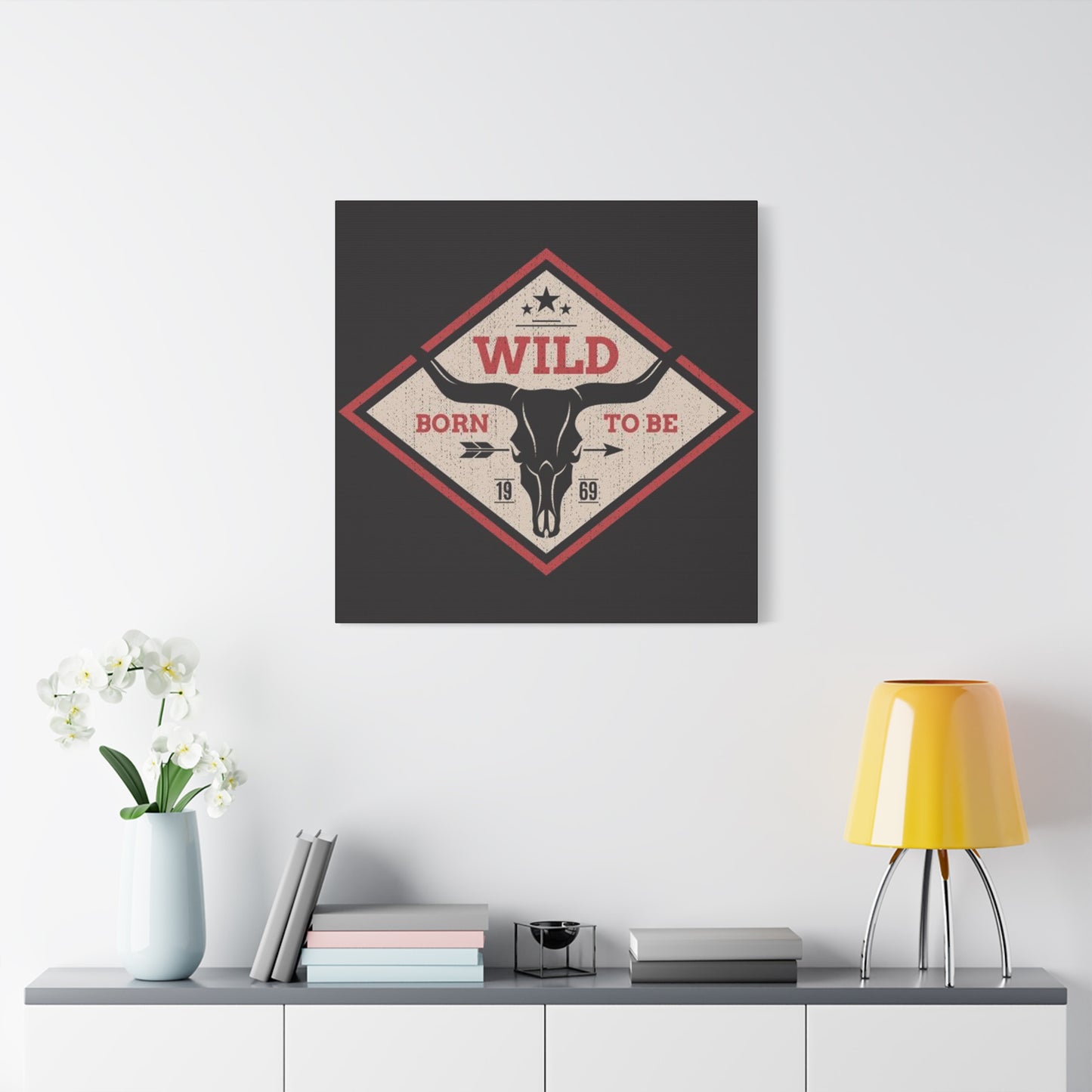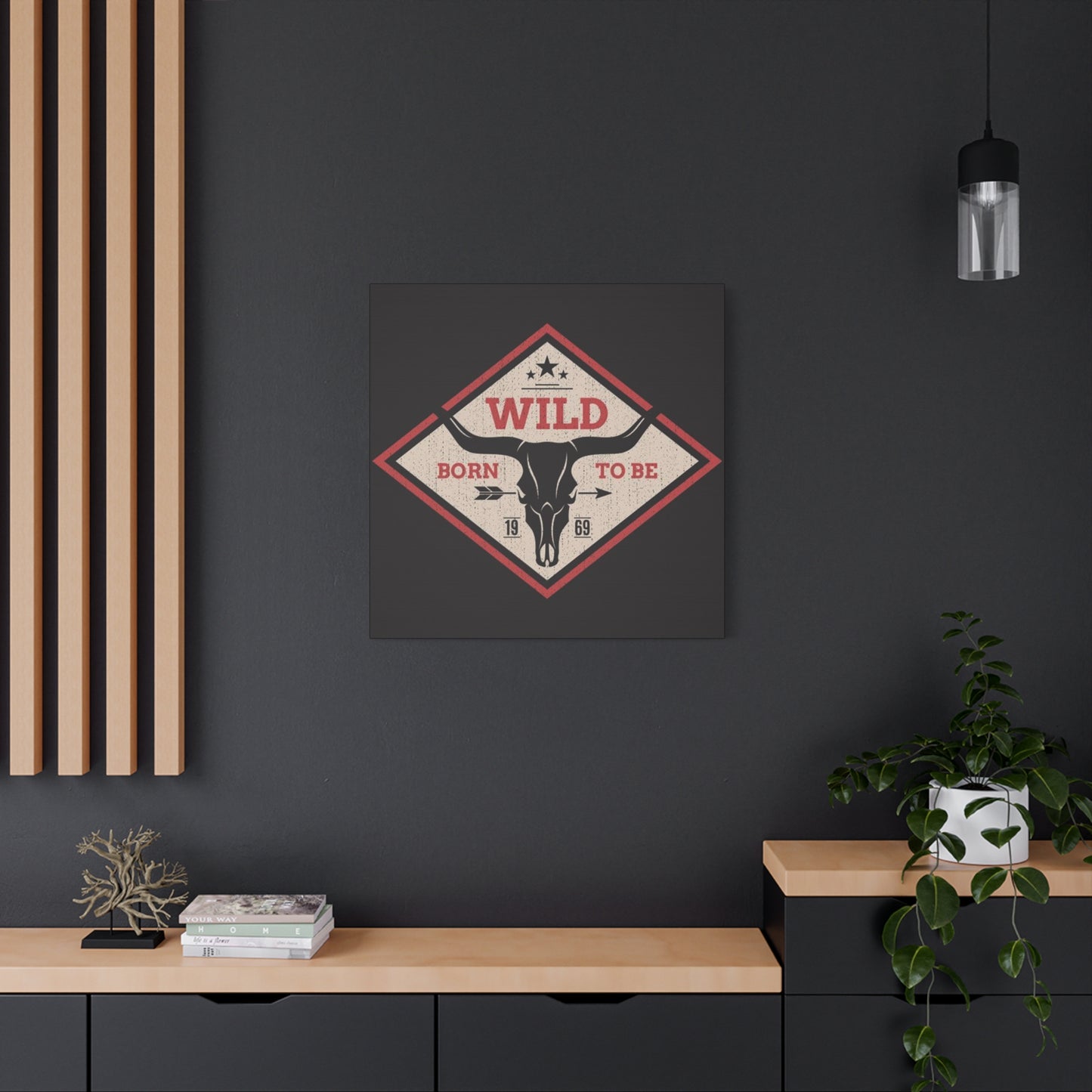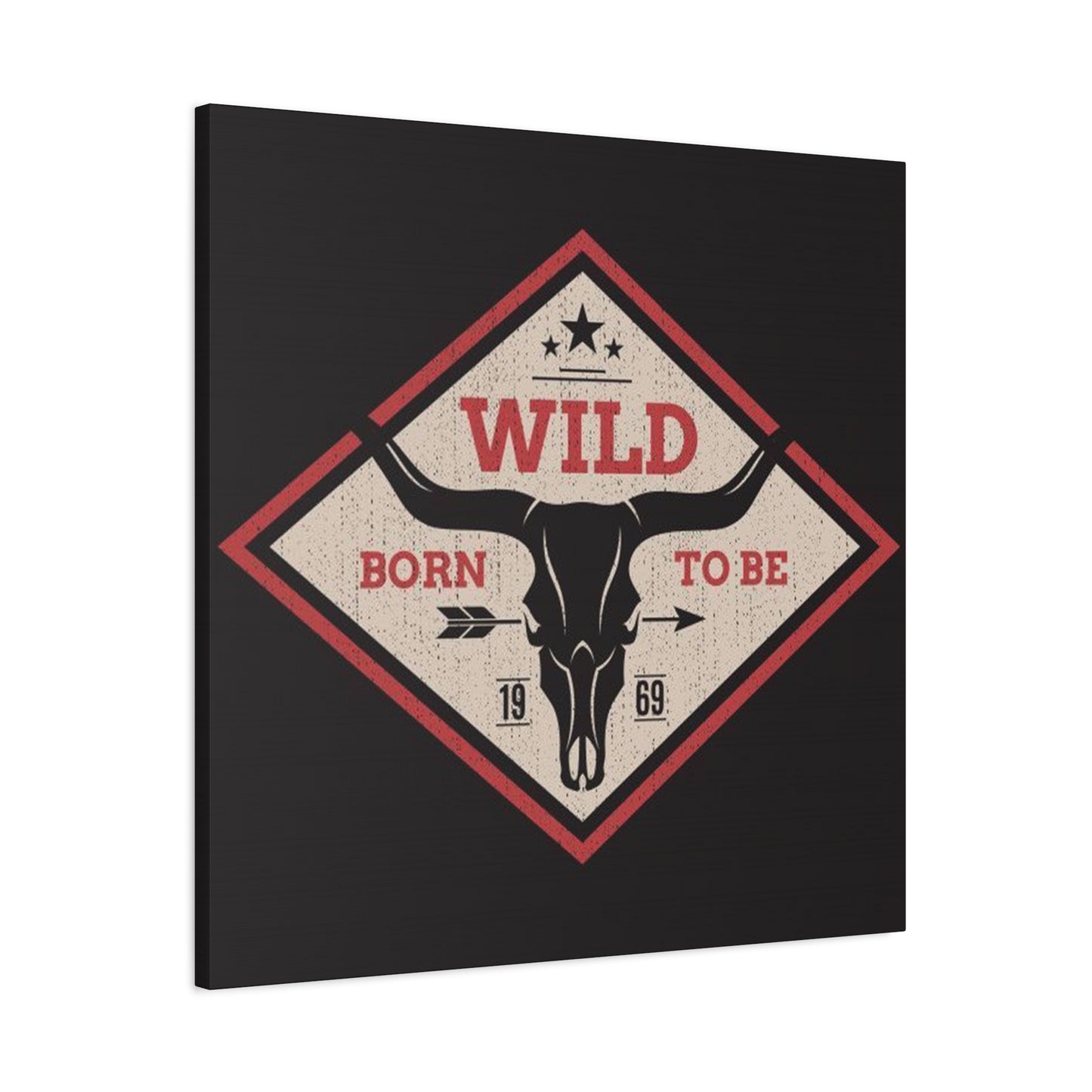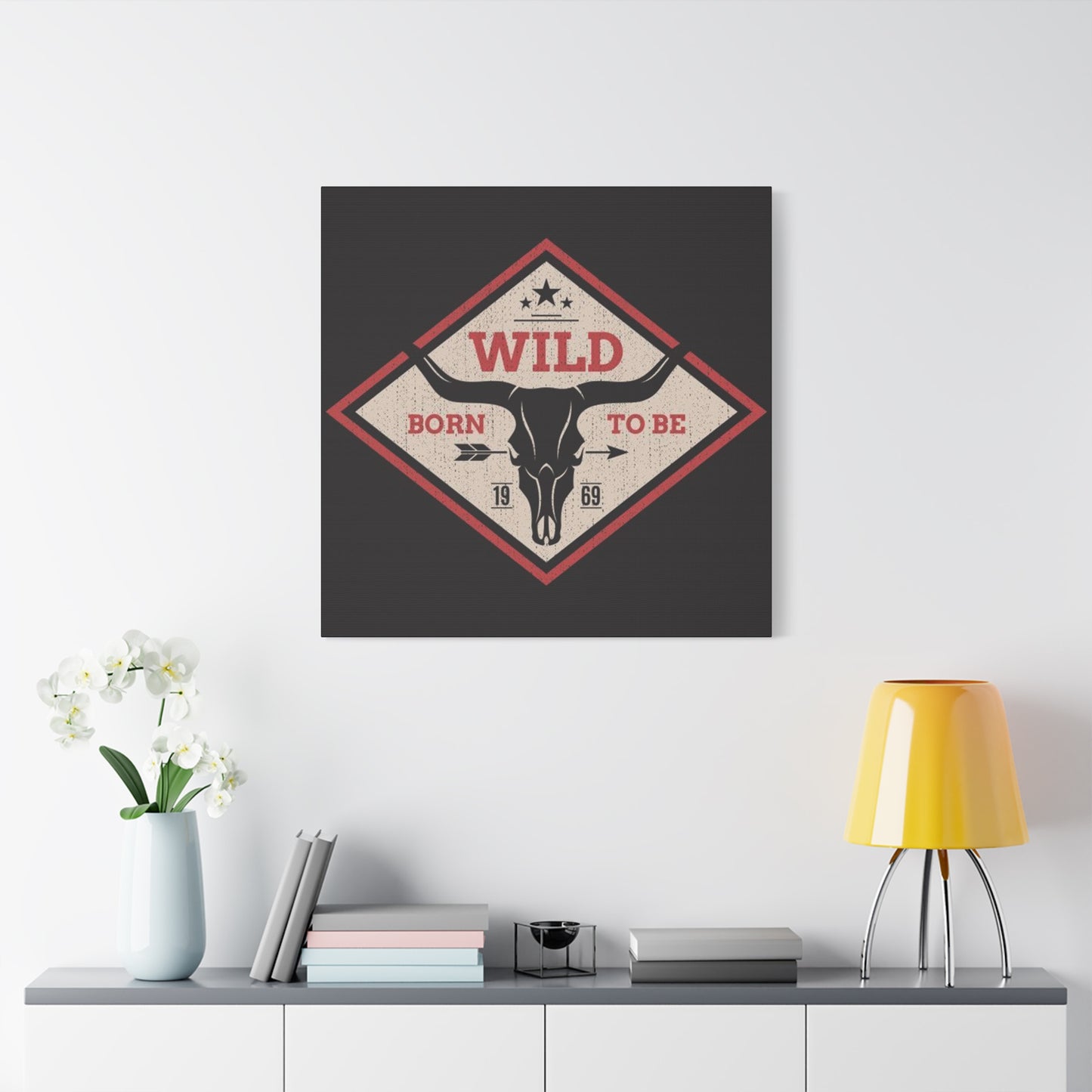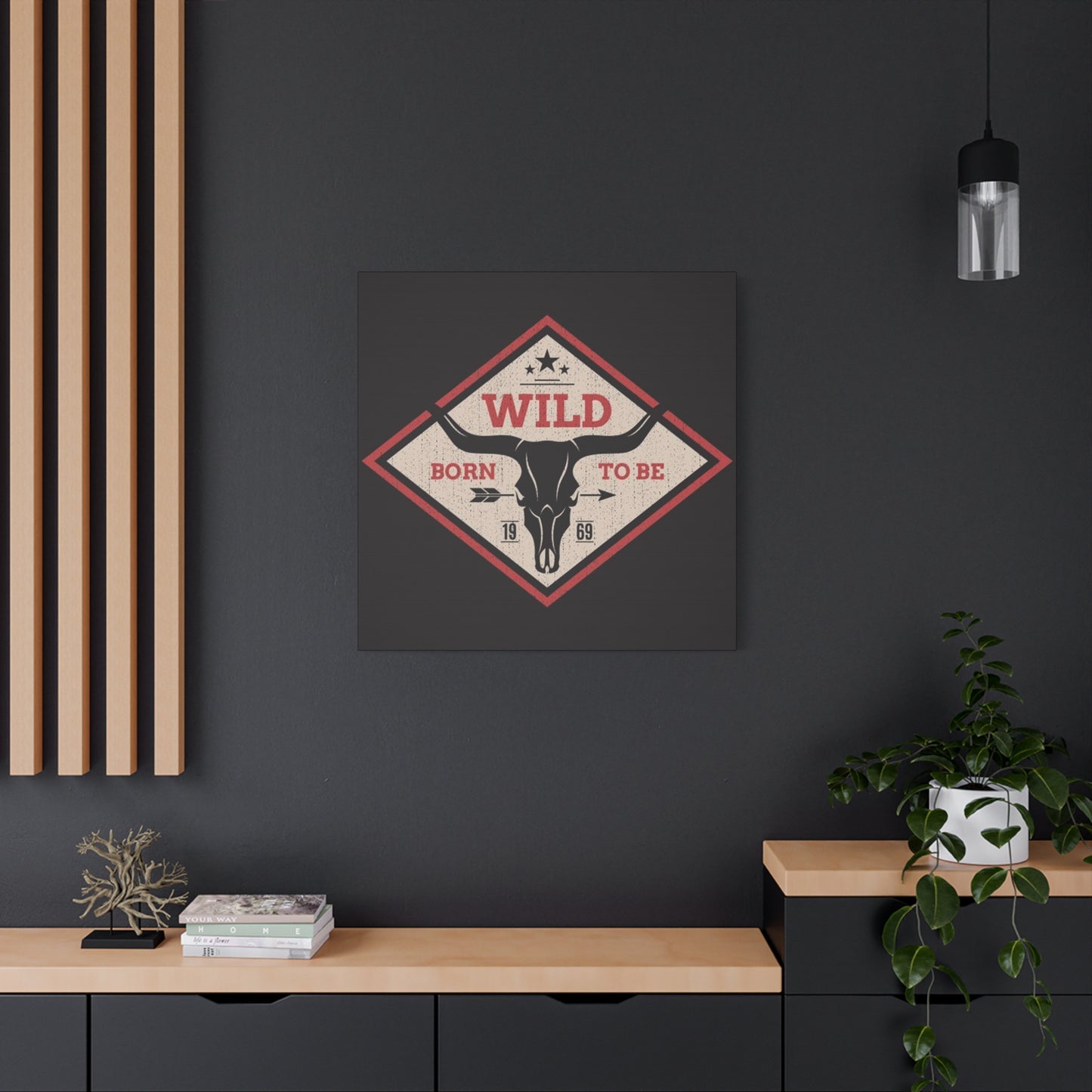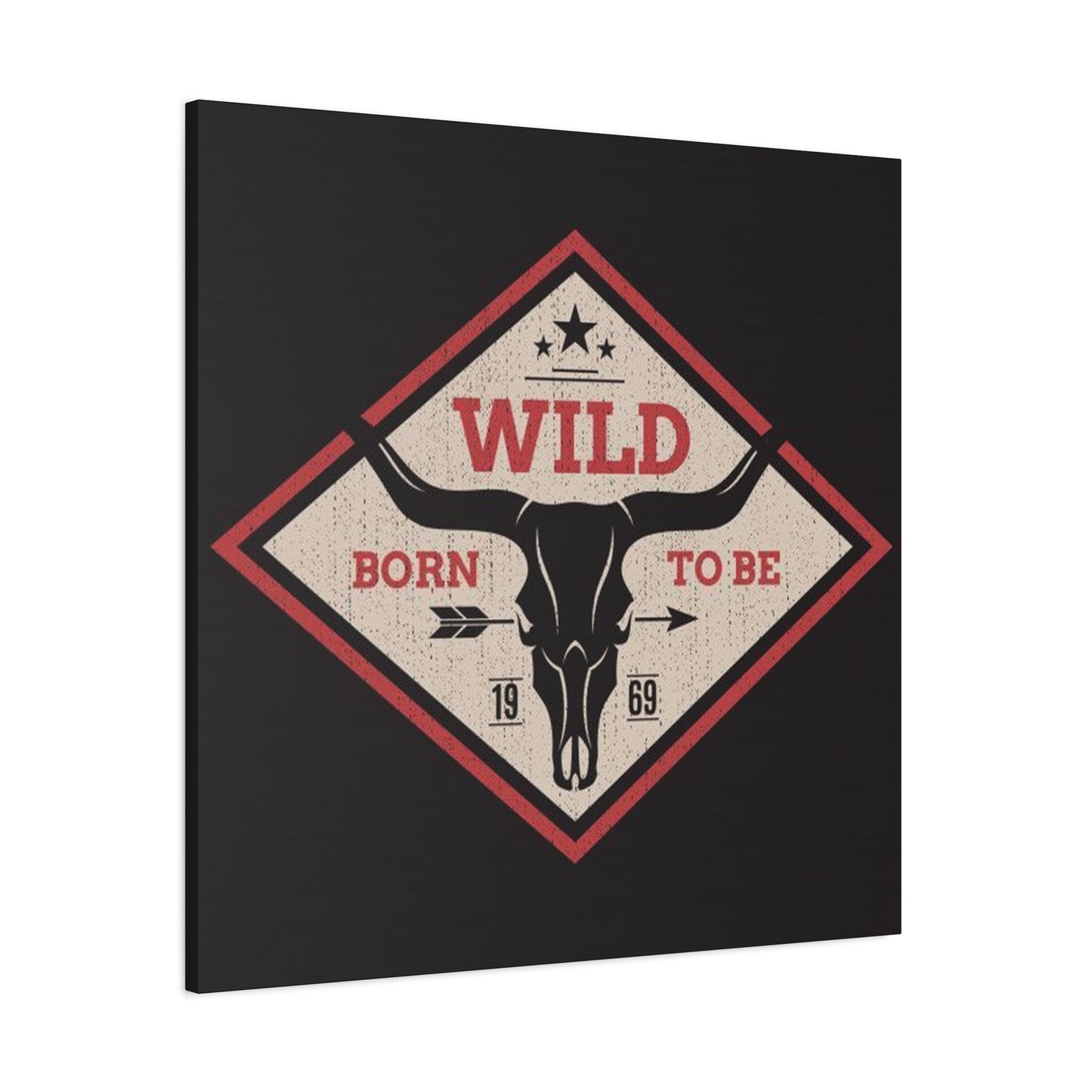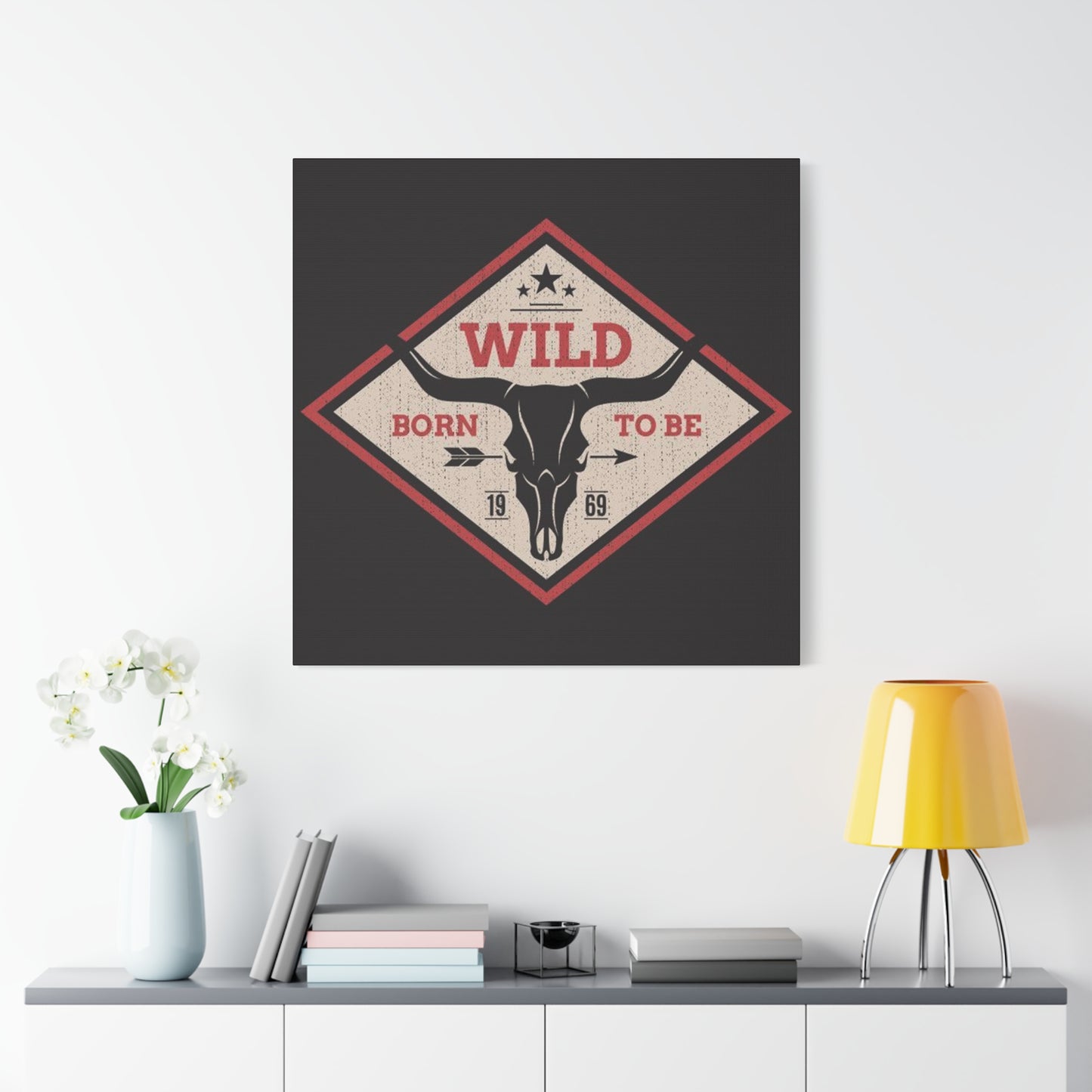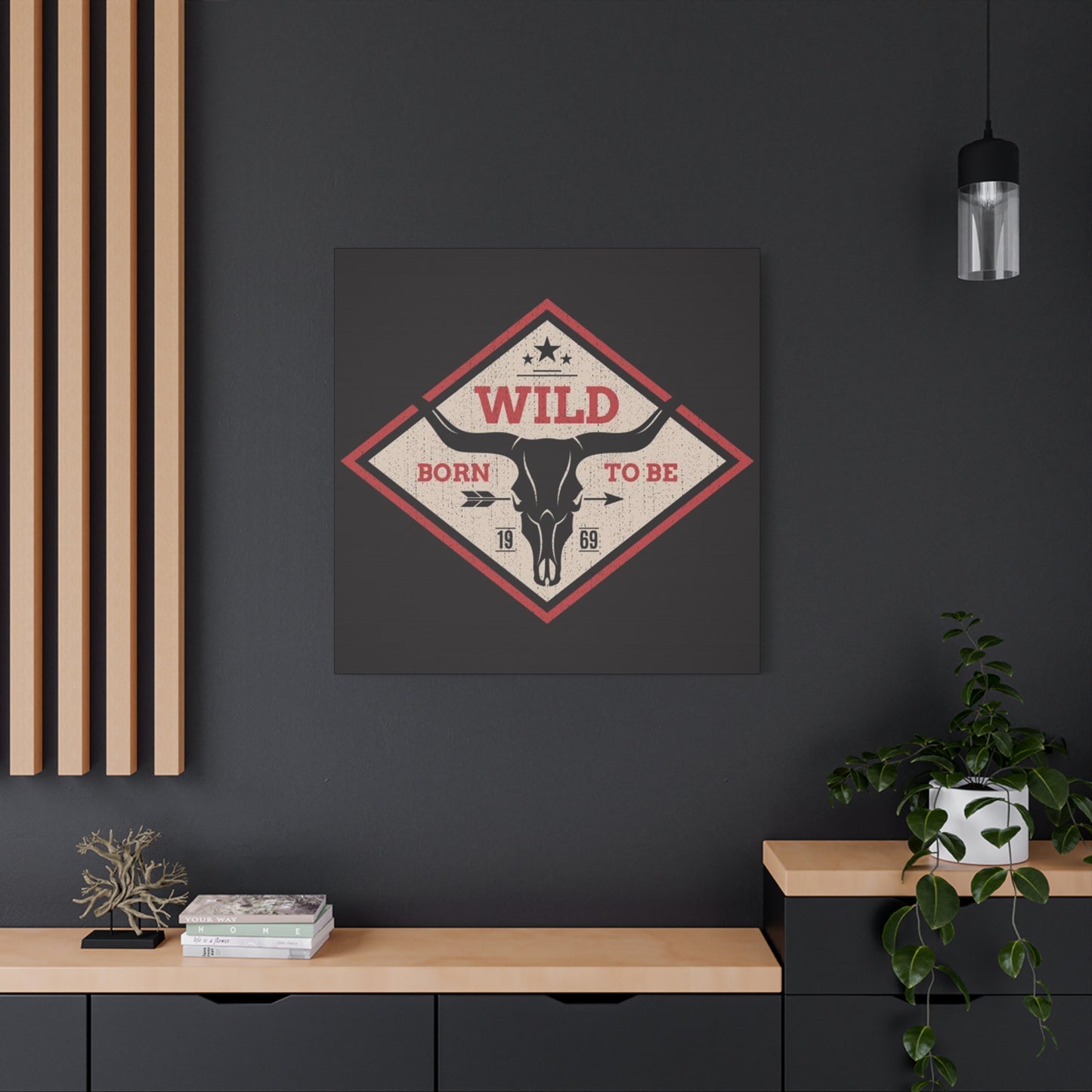Rebel Spirit Wall Decorations: Born to Be Wild Art for Adventurous Homes
In the world of interior design, few things capture the essence of freedom and rebellion quite like being born to be wild wall art. These powerful decorative pieces speak to the untamed spirit within us all, transforming ordinary living spaces into sanctuaries of adventure and self-expression. Whether you're drawn to the roar of motorcycles, the call of the open road, or simply the desire to break free from conventional design rules, wild-themed artwork offers an incredible opportunity to infuse your home with personality and edge.
The concept of incorporating rebellious artwork into home decor has evolved significantly over the years. What once might have been considered too bold or unconventional for mainstream interior design has now become a celebrated way to showcase individuality and passion. Born to be wild art represents more than just decoration; it embodies a lifestyle choice, a statement of independence, and a celebration of the free-spirited nature that exists within many of us.
When we talk about wild wall art, we're not just referring to motorcycle imagery or leather-clad rebels. This genre encompasses a broad spectrum of themes including nature's untamed beauty, adventure sports, vintage Americana, rock and roll culture, and anything that speaks to the desire for freedom and authenticity. The beauty of this art style lies in its versatility and its ability to resonate with people from all walks of life who share a common desire to live boldly and authentically.
Modern homes are increasingly becoming canvases for personal expression, and born to be wild artwork provides the perfect medium for those who refuse to conform to traditional decorating norms. These pieces serve as daily reminders to embrace life's adventures, take calculated risks, and never lose sight of what makes us feel truly alive. The psychological impact of surrounding ourselves with imagery that represents our values and aspirations cannot be overstated – it creates an environment that constantly reinforces our commitment to living life on our own terms.
The market for wild-themed wall art has expanded tremendously, offering everything from vintage-inspired motorcycle prints to contemporary abstract pieces that capture the essence of freedom through color and form. This diversity ensures that regardless of your specific style preferences or the overall aesthetic of your home, there's wild art that will seamlessly integrate while still making a powerful statement.
As we explore the various aspects of incorporating born to be wild wall art into your living space, we'll discover how these pieces can serve multiple purposes: they're conversation starters, mood enhancers, and personal statement pieces all rolled into one. They have the unique ability to transform a sterile room into a space that pulses with energy and reflects the dynamic personality of its inhabitant.
Powerful Declarations Through Rebellious Wall Artwork
The concept of making powerful declarations through rebellious wall artwork goes far beyond simply hanging a picture on the wall. These pieces serve as visual manifestos, bold proclamations of personal values and life philosophies that refuse to whisper when they could shout. Born to be wild wall art represents a form of self-expression that's both deeply personal and universally understood, speaking to the rebel that exists in everyone's heart.
When you choose to display rebellious artwork in your home, you're making a statement about who you are and what you stand for. These pieces often feature bold typography, striking imagery, and powerful messages that challenge conventional thinking and celebrate the courage to be different. The visual impact of such artwork extends beyond mere decoration; it creates an atmosphere that encourages authenticity, risk-taking, and the pursuit of dreams regardless of societal expectations.
The psychology behind displaying rebellious artwork is fascinating. These pieces serve as daily affirmations of our commitment to living boldly and authentically. They remind us that conformity is optional and that true happiness often comes from having the courage to follow our own path, even when that path diverges from what others might consider normal or acceptable.
Rebellious wall art often incorporates elements that have historical significance in counterculture movements. Motorcycle imagery, for instance, carries with it decades of association with freedom, rebellion, and the rejection of mainstream values. Rock and roll iconography connects us to a musical movement that challenged social norms and gave voice to a generation's desire for change and self-expression.
The beauty of rebellious artwork lies in its ability to evolve with the times while maintaining its core message of independence and authenticity. Contemporary artists continue to create pieces that challenge current social norms and expectations, ensuring that this art form remains relevant and powerful for new generations of free spirits and nonconformists.
Many people find that displaying rebellious artwork gives them permission to embrace aspects of their personality that they might otherwise keep hidden. In a world that often rewards conformity and discourages risk-taking, having visual reminders of the importance of staying true to oneself can be incredibly empowering and liberating.
The selection process for rebellious wall art should be deeply personal. The most powerful pieces are those that speak directly to your individual experience and values. Whether it's a vintage motorcycle poster that reminds you of weekend rides through mountain passes or an abstract piece that captures the feeling of breaking free from limitations, the best rebellious artwork serves as a mirror reflecting your truest self.
Creating a gallery wall of rebellious pieces can amplify their impact even further. When multiple pieces work together to tell a cohesive story about your values and aspirations, they create an environment that constantly reinforces your commitment to living authentically and boldly.
Incorporating Wildness: Born to Be Wild Canvas Art Solutions
Canvas prints have revolutionized the way we think about wall art, and when it comes to born to be wild themes, they offer unique advantages that make them particularly well-suited for creating impactful displays. The texture and depth of canvas give wild-themed artwork a tactile quality that enhances the emotional connection between the viewer and the piece, making the rebellious spirit feel more tangible and immediate.
The process of selecting canvas prints for wild-themed decor begins with understanding how different canvas treatments can affect the overall impact of the artwork. Gallery-wrapped canvases, where the image extends around the edges of the frame, create a modern, seamless look that works particularly well with contemporary wild art. Traditional stretched canvases with visible frames can add a classic touch that complements vintage-inspired wild themes.
One of the most significant advantages of canvas prints is their ability to handle large-scale reproductions without losing detail or impact. Wild-themed artwork often benefits from being displayed at substantial sizes, as the bold imagery and powerful messages need space to breathe and make their full impact. Canvas printing technology allows for crisp, vibrant reproductions that maintain their quality even at impressive dimensions.
The versatility of canvas prints makes them ideal for various wild art themes. Whether you're working with photographic imagery of motorcycles and landscapes, illustrated designs featuring rebellious icons, or abstract pieces that capture the essence of freedom through color and form, canvas provides a professional presentation that elevates the artwork and gives it gallery-quality presence.
Color reproduction on canvas is particularly important for wild-themed artwork, as these pieces often rely on bold, saturated colors to convey their message of passion and intensity. High-quality canvas printing preserves the vibrancy of reds, blacks, and metallics that are commonly featured in rebellious artwork, ensuring that the emotional impact of the piece remains strong over time.
The durability of canvas prints makes them an excellent investment for those who want their wild art to maintain its impact for years to come. Unlike paper prints that can fade or become damaged easily, properly produced canvas prints resist fading, moisture, and general wear, making them suitable for display in various environments throughout the home.
When incorporating wild canvas art into existing decor, consider how the texture of canvas interacts with other materials in the room. The slight texture of canvas can add visual interest and depth to smooth, modern surfaces, while complementing rougher textures like exposed brick or reclaimed wood that often feature in industrial or rustic design schemes.
The framing options for canvas prints also contribute to their versatility in wild-themed decor. Floating frames can add sophistication while maintaining the casual, rebellious spirit of the artwork. Raw edge presentations, where the canvas is simply stretched over wooden bars, create a more casual, authentic feel that aligns perfectly with the unpretentious nature of wild art themes.
Lighting plays a crucial role in showcasing canvas prints effectively. The slight texture of canvas interacts beautifully with both natural and artificial light, creating subtle shadows and highlights that add dimension to the artwork. Strategic lighting can enhance the drama and impact of wild-themed canvas pieces, making them true focal points in any room.
Design Strategies for Born to Be Wild Poster Displays
Poster art represents one of the most accessible and versatile forms of wild-themed wall decoration, offering endless possibilities for creating dynamic displays that capture the rebellious spirit without requiring significant investment. The key to successfully styling born to be wild posters lies in understanding how to present them in ways that maximize their impact while integrating seamlessly with your overall design aesthetic.
The first consideration in poster styling is scale and proportion. Wild-themed posters work best when they're given adequate space to make their statement. A single large poster can serve as a dramatic focal point, while collections of smaller posters can create gallery-style arrangements that tell more complex stories about adventure, freedom, and rebellion.
Framing strategies for wild posters can dramatically affect their presentation and integration with existing decor. Simple black frames provide a classic, timeless look that works with virtually any wild theme, while metal frames can enhance the industrial edge that many rebellious artworks naturally possess. For a more casual, authentic feel, consider displaying posters without frames, using creative mounting techniques that maintain the raw, unpolished aesthetic that aligns with rebellious themes.
Color coordination plays a vital role in successful poster displays. While wild-themed artwork often features bold, contrasting colors, the most effective displays find ways to create harmony between multiple pieces. This might involve selecting posters that share common color elements, or using matting and framing to create visual connections between disparate pieces.
The arrangement of multiple posters requires careful consideration of visual weight and flow. Large, bold pieces should be balanced with smaller, more detailed works to create arrangements that feel dynamic rather than chaotic. The goal is to create displays that guide the viewer's eye through the collection while allowing each piece to maintain its individual impact.
Lighting considerations for poster displays are crucial for maximizing their visual impact. Unlike canvas or other textured materials, posters can be susceptible to glare, so positioning them away from direct light sources or using anti-reflective glass in frames can ensure optimal viewing conditions. Accent lighting can add drama and focus to particularly important pieces within a collection.
The integration of posters with other design elements in the room requires thoughtful planning. Wild-themed posters work exceptionally well with industrial design elements like exposed pipes, brick walls, and metal fixtures. They also complement vintage and retro furnishings that share the same spirit of authenticity and nonconformity.
Creating themed groupings of posters can amplify their collective impact. Motorcycle-themed posters work well together, as do pieces featuring similar color palettes or design styles. However, mixing different wild themes can create more interesting and personal displays that reflect the complexity of individual personalities and interests.
The seasonal rotation of poster displays offers opportunities to keep wall art fresh and engaging throughout the year. Summer might call for pieces featuring outdoor adventures and open roads, while winter could showcase more indoor rebellion themes or cozy but edgy imagery that maintains the wild spirit while acknowledging seasonal changes.
Storage and preservation of posters not currently on display is important for maintaining their quality over time. Proper storage techniques ensure that you can rotate displays without worrying about damage to pieces that aren't currently featured in your design scheme.
Freedom's Essence Captured in Untamed Artwork
The spirit of freedom represents perhaps the most compelling and universal theme in wild wall art, transcending specific imagery or styles to capture something fundamental about the human desire for autonomy and self-determination. Artwork that successfully embodies freedom's essence speaks to viewers on a deeply emotional level, evoking feelings of possibility, adventure, and the courage to break free from limitations.
Freedom-themed artwork takes many forms, from literal representations of open landscapes and soaring birds to abstract compositions that capture the feeling of liberation through color, form, and movement. The most effective pieces in this category manage to translate the intangible concept of freedom into visual experiences that resonate with viewers' own desires for independence and authenticity.
The psychological impact of surrounding oneself with freedom-themed artwork cannot be underestimated. These pieces serve as daily reminders of the importance of maintaining autonomy and making choices based on personal values rather than external expectations. They can provide motivation during challenging times and inspiration for making bold decisions that align with one's true nature.
Color plays a particularly important role in freedom-themed artwork. Blues often represent the vast expanse of sky and ocean, symbolizing limitless possibility and the call of adventure. Warm oranges and reds capture the passion and energy required to pursue freedom, while earth tones ground these ethereal concepts in the natural world where true freedom is often found.
The composition of freedom-themed pieces frequently features elements that suggest movement, expansion, and the breaking of boundaries. Diagonal lines create dynamic energy, while flowing forms suggest the organic nature of true freedom. Negative space becomes particularly important, as it represents the openness and possibility that freedom provides.
Vintage Americana elements frequently appear in freedom-themed wild art, drawing on cultural symbols that have long represented liberty and independence. However, contemporary artists continue to find new ways to express these timeless concepts, creating pieces that speak to current generations while honoring the enduring human desire for autonomy.
The integration of freedom-themed artwork into living spaces requires consideration of how these pieces will interact with daily life. The most effective placements are those where the artwork can be regularly seen and contemplated, serving as ongoing inspiration for living authentically and boldly.
Natural elements often feature prominently in freedom-themed wild art, reflecting the connection between liberty and the natural world. Mountains, oceans, forests, and open skies all serve as powerful symbols of the freedom that exists beyond human-imposed limitations and restrictions.
The scale of freedom-themed artwork often reflects the magnitude of the concept itself. Large pieces can create immersive experiences that transport viewers to places where freedom reigns supreme, while smaller pieces can serve as intimate reminders of personal liberty and the importance of maintaining autonomy in daily decisions.
Photography-based freedom art often captures moments of pure liberation – a motorcycle rider on an empty highway, a person standing at the edge of a cliff, or birds in flight against an endless sky. These images freeze moments of perfect freedom, allowing viewers to experience vicariously the sensation of complete liberty.
Adventure Enthusiasts' Perfect Interior Spaces
Creating living spaces that perfectly complement the adventurous spirit requires more than simply hanging a few wild-themed pieces on the walls. Adventure lovers need environments that reflect their passion for exploration, challenge, and the pursuit of extraordinary experiences. The integration of born to be wild wall art into these spaces serves as both inspiration and affirmation of their chosen lifestyle.
The foundation of any adventure lover's space begins with understanding how different areas of the home can support and celebrate their lifestyle. Living rooms become command centers for planning expeditions, displaying maps, gear, and artwork that captures the spirit of adventure. Bedrooms transform into personal retreats where dreams of future adventures can flourish, surrounded by imagery that fuels the desire for exploration.
Adventure-themed wall art serves multiple functions in these carefully curated spaces. Beyond mere decoration, these pieces provide daily motivation, serve as conversation starters with fellow adventurers, and create environments that constantly reinforce the importance of seeking new experiences and pushing personal boundaries.
The selection of artwork for adventure lovers' spaces should reflect both past achievements and future aspirations. Pieces that commemorate completed adventures – perhaps custom prints featuring photos from significant trips – create personal museums of accomplishment. Meanwhile, artwork depicting unexplored destinations or challenging adventures serves as motivation for future endeavors.
Color schemes in adventure-focused spaces often draw inspiration from the natural world and the equipment used in various activities. Earth tones provide grounding and connection to the outdoors, while accent colors might reflect the blues of sky and water or the vibrant hues found in technical outdoor gear.
The practical aspects of adventure living must be considered when selecting and placing wall art. Pieces should be durable enough to withstand the lifestyle of someone who frequently comes and goes with muddy boots and dusty gear. Easy-to-clean surfaces and secure mounting become important considerations for artwork that will share space with active living.
Lighting in adventure lovers' spaces often needs to be both functional and atmospheric. Task lighting supports the planning and preparation aspects of adventure living, while accent lighting can create moods that enhance the impact of wild-themed artwork and create environments conducive to dreaming about future expeditions.
The integration of functional elements with decorative artwork creates spaces that truly serve the adventure lifestyle. Maps, gear displays, and planning boards can be incorporated into gallery walls that also feature inspirational wild art, creating comprehensive environments that support both the practical and emotional aspects of adventure living.
Storage solutions in adventure-focused spaces must accommodate both the artwork and the gear that defines this lifestyle. Custom shelving and display systems can showcase both functional equipment and decorative pieces, creating interesting juxtapositions that highlight the real-world application of the adventurous spirit depicted in the artwork.
The seasonal evolution of adventure lovers' spaces reflects the cyclical nature of many outdoor activities. Wall art can be rotated to emphasize different types of adventures throughout the year, keeping the space fresh and aligned with current activities and interests.
Blending Rebellious Art with Industrial Design Elements
The marriage of born to be wild artwork with industrial design elements creates some of the most compelling and authentic interior spaces imaginable. This combination draws on shared values of functionality, honesty of materials, and rejection of superficial decoration in favor of meaningful, impactful design choices that celebrate both form and function.
Industrial design elements provide the perfect backdrop for wild-themed artwork, as both design philosophies embrace authenticity and reject pretense. Exposed brick walls, steel beams, concrete floors, and metal fixtures create environments where rebellious artwork feels completely at home, rather than like an afterthought or incongruous addition to the space.
The texture contrasts created by combining smooth industrial surfaces with textured artwork add visual interest and depth to spaces. Canvas prints gain additional impact when displayed against rough brick or concrete walls, while metal industrial fixtures can complement the bold lines and strong graphics common in wild-themed art.
Color coordination between industrial elements and rebellious artwork often focuses on neutral backgrounds that allow the art to take center stage. Raw concrete, weathered metal, and natural brick provide sophisticated backdrops that make bold artwork pop while maintaining the overall aesthetic integrity of the industrial design approach.
The integration of lighting becomes particularly important in industrial spaces featuring wild artwork. Track lighting systems, often already present in industrial designs, can be adjusted to highlight specific pieces while maintaining the functional aesthetic of the overall space. Industrial-style pendant lights can provide both general illumination and dramatic accent lighting for featured artwork.
Furniture selection in industrial spaces with wild artwork should support both design philosophies. Pieces made from honest materials like steel, leather, and reclaimed wood complement both the industrial aesthetic and the authentic spirit of rebellious artwork. Vintage pieces with history and character often work particularly well in these environments.
The scale considerations for artwork in industrial spaces often favor larger pieces that can hold their own against the strong architectural elements common in this design style. Small pieces might get lost against expansive brick walls or competing with dominant structural elements, while substantial artwork can serve as focal points that balance the visual weight of industrial features.
The practical benefits of combining industrial design with wild artwork extend beyond aesthetics. Industrial materials are typically durable and low-maintenance, making them ideal for spaces that need to accommodate active lifestyles. This durability ensures that both the architectural elements and the artwork can maintain their impact over time with minimal upkeep.
The historical connections between industrial design and rebellious culture create natural synergies that make this combination feel authentic rather than forced. Both movements emerged from rejection of elaborate, superficial design in favor of honest, functional approaches that celebrate strength and utility.
The flexibility of industrial spaces makes them ideal for evolving art displays. The open layouts and minimal built-in features common in industrial design make it easy to reconfigure artwork arrangements as collections grow or personal tastes evolve, ensuring that spaces can adapt to changing needs and interests.
Canvas versus Poster: Optimal Formats for Untamed Art
The decision between canvas and poster formats for wild-themed artwork involves multiple considerations that can significantly impact both the visual effect and the practical aspects of displaying rebellious art. Each format brings distinct advantages and characteristics that make them suitable for different applications, spaces, and personal preferences.
Canvas prints offer a premium presentation that elevates wild-themed artwork to gallery-quality status. The texture of canvas adds depth and richness to images, while the stretched presentation creates a professional appearance that commands attention and respect. For wild art featuring bold graphics or photographic imagery, canvas provides excellent color reproduction and longevity that ensures the piece will maintain its impact over time.
The three-dimensional quality of canvas prints makes them particularly well-suited for artwork that benefits from a sense of depth and presence. Motorcycle photography, landscape imagery, and portraits all gain additional impact when presented on canvas, as the texture and dimensionality enhance the viewer's connection to the subject matter.
Poster formats offer advantages in terms of accessibility, variety, and flexibility that make them appealing for many wild art applications. The lower cost of posters allows for larger collections and more frequent changes, enabling art lovers to experiment with different arrangements and themes without significant financial investment.
The crisp, flat presentation of posters can actually be advantageous for certain types of wild artwork, particularly pieces featuring fine detail, typography, or graphic design elements. Vintage concert posters, for instance, often look most authentic when presented in their original poster format rather than translated to canvas.
Framing options differ significantly between canvas and poster formats, with each offering unique presentation possibilities. Canvas pieces can be displayed unframed for a casual, contemporary look, or enhanced with floating frames that add sophistication without overwhelming the artwork. Posters require framing for protection and presentation, but this necessity creates opportunities for customization through mat and frame selection.
The durability considerations between canvas and poster formats often influence long-term decisions about art purchases. Canvas prints, when properly produced, resist fading and damage better than paper-based posters, making them better investments for pieces that hold particular significance or that will be displayed in challenging environments.
Size limitations and possibilities differ between the two formats. While both can be produced in large sizes, canvas printing technology often handles very large formats more successfully than poster printing, making canvas the preferred choice for statement pieces that need to fill substantial wall space.
The authenticity factor plays a role in format selection for certain types of wild artwork. Vintage-inspired pieces might feel more authentic when presented as posters, mimicking their original format, while contemporary artwork might benefit from the modern, professional presentation that canvas provides.
Installation and maintenance requirements vary significantly between formats. Canvas pieces are generally easier to hang and maintain, as they don't require glass that can reflect light or break. Posters in frames require more careful handling and positioning to avoid glare and ensure proper protection.
The environmental impact and storage considerations also differ between formats. Posters can be stored flat in portfolios when not displayed, making them easier to rotate and protect. Canvas pieces require more storage space but are less likely to be damaged during storage due to their sturdy construction.
Thoughtful Gifts for Independent Spirits: Wild Art Prints
Selecting born to be wild prints as gifts for free-spirited individuals requires understanding both the recipient's personality and the deeper meaning that wild-themed artwork can hold for those who value independence and authenticity. These gifts represent more than mere decoration; they serve as acknowledgments of the recipient's values and affirmations of their chosen lifestyle.
The personal nature of wild-themed artwork makes gift selection both challenging and rewarding. The most meaningful gifts are those that reflect genuine understanding of the recipient's interests, experiences, and aspirations. A motorcycle enthusiast might appreciate vintage bike prints, while someone passionate about travel might prefer artwork featuring open roads or distant horizons.
Custom and personalized wild art prints offer unique gifting opportunities that create one-of-a-kind pieces with special significance. Photo-based artwork using the recipient's own adventure images, custom typography featuring meaningful quotes or dates, and commissioned pieces that incorporate personal symbols or themes create gifts that truly cannot be found anywhere else.
The presentation of wild art gifts contributes significantly to their impact and perceived value. Professional packaging, thoughtful card messages that connect the artwork to the recipient's lifestyle, and careful consideration of timing can transform the gift-giving experience into something truly memorable and meaningful.
Size considerations for gifted artwork must balance impact with practicality. While large pieces make dramatic statements, smaller formats might be more appropriate for recipients whose living situations don't accommodate substantial wall art. The key is selecting pieces that will find appropriate homes in the recipient's current space while still making meaningful statements.
The educational aspect of wild art gifts should not be overlooked. Including information about the artist, the inspiration behind the piece, or the cultural significance of the imagery adds depth to the gift and demonstrates thoughtfulness beyond simple selection of attractive artwork.
Themed collections of wild prints can create comprehensive gifts that tell stories or explore concepts in depth. A series of prints exploring different aspects of freedom, adventure, or rebellion can provide recipients with options for creating their own curated displays while ensuring thematic consistency.
The timing of wild art gifts often connects to significant life events or achievements. Graduation gifts might feature forward-looking adventure themes, new home gifts could focus on personal space transformation, and milestone birthday gifts might celebrate the recipient's accumulated experiences and future aspirations.
The versatility of wild art prints makes them suitable for various relationships and occasions. Casual acquaintances might receive smaller, less personal pieces, while close friends and family members might receive more significant artworks that reflect deep understanding of their personalities and values.
The long-term impact of thoughtful wild art gifts often exceeds expectations. Recipients frequently report that meaningful artwork becomes treasured parts of their personal environments, serving as ongoing reminders of the giver's thoughtfulness and understanding of their character.
Establishing Focal Points with Rebellious Wall Artwork
Creating compelling focal points with born to be wild wall art requires strategic thinking about placement, scale, and supporting elements that can amplify the impact of rebellious artwork while ensuring it achieves its intended role as a room's primary visual anchor. The most effective focal points draw the eye immediately while providing enough visual interest to reward continued viewing.
The selection of artwork for focal point applications must consider both immediate impact and sustained interest. Pieces chosen as focal points should possess enough complexity and visual richness to reward multiple viewings, revealing new details and maintaining their ability to capture attention over time. Simple or overly bold pieces might grab initial attention but fail to provide the lasting engagement that successful focal points require.
Scale relationships between focal point artwork and surrounding elements require careful calibration. Focal point pieces must be substantial enough to command attention but not so large that they overwhelm the space or compete unsuccessfully with architectural features. The goal is to create balance where the artwork enhances rather than dominates the overall environment.
Placement considerations for focal point artwork extend beyond simple wall selection to include height, lighting, and sight lines from various positions within the room. The most effective focal points are visible from multiple locations and viewing angles, ensuring that they can fulfill their role regardless of how the space is used or where people position themselves.
Color coordination between focal point artwork and surrounding design elements should support rather than compete with the piece's impact. While the artwork should stand out, it should not clash so dramatically with existing elements that it creates visual tension or makes the space feel disjointed.
Lighting design for focal point artwork requires both technical and aesthetic considerations. Proper illumination ensures that the artwork can be seen clearly and creates the dramatic impact that focal points require, while avoiding glare or harsh shadows that might detract from the viewing experience.
Supporting elements around focal point artwork should complement and enhance rather than compete with the featured piece. Furniture arrangement, smaller decorative objects, and even architectural modifications should work together to direct attention toward the focal point while creating a harmonious overall composition.
The psychological impact of well-chosen focal points extends beyond mere visual interest. These pieces set the tone for entire spaces, influencing mood, conversation topics, and the overall feeling that spaces create for both inhabitants and visitors.
Seasonal or occasional changes to focal point artwork can refresh spaces without requiring complete redecorating. The infrastructure created to support one focal piece can often accommodate different artworks, allowing for periodic updates that keep spaces feeling fresh and aligned with changing interests or moods.
The maintenance and protection of focal point artwork becomes particularly important due to their prominent positioning and central role in room designs. These pieces often receive more attention and examination than other artwork, making their condition and presentation crucial to the overall success of the space.
Employing Dark Palettes to Amplify Wild Artistic Themes
Dark color schemes provide powerful foundations for displaying wild-themed artwork, creating atmospheric environments that enhance the rebellious and mysterious qualities inherent in many pieces while providing sophisticated backdrops that allow bold artwork to achieve maximum impact. The strategic use of dark tones can transform ordinary spaces into dramatic settings that perfectly complement the edgy nature of wild art.
The psychology of dark colors in interior spaces creates environments that feel intimate, sophisticated, and slightly rebellious – qualities that align perfectly with wild-themed artwork. Dark walls provide neutral backdrops that make colorful artwork pop while creating mood-rich environments that encourage contemplation and appreciation of the displayed pieces.
Color temperature considerations become crucial when working with dark palettes and wild artwork. Warm dark tones like deep browns and charcoal grays create cozy, inviting environments, while cool dark colors like navy and deep green create more mysterious, dramatic atmospheres. The choice between warm and cool dark tones should align with both the artwork being displayed and the desired mood for the space.
The practical advantages of dark color schemes include their ability to hide imperfections, reduce glare that might interfere with artwork viewing, and create sophisticated environments that feel intentionally designed rather than accidentally assembled. Dark backgrounds also provide excellent contrast for both light and colorful artwork, ensuring that pieces receive maximum visual impact.
Lighting becomes particularly important in dark environments featuring wild artwork. While dark walls can absorb light, strategic illumination can create dramatic effects that enhance both the artwork and the overall atmosphere. Track lighting, picture lights, and accent lighting all play important roles in ensuring that artwork receives proper illumination while maintaining the moody atmosphere that dark color schemes provide.
Texture integration with dark color schemes adds depth and interest that prevents spaces from feeling flat or monotonous. The combination of dark walls with textured elements like exposed brick, wood paneling, or metal accents creates rich environments where wild artwork feels completely at home.
The balance between dark backgrounds and other design elements requires careful consideration to avoid creating spaces that feel oppressive or uncomfortable. Strategic use of lighter accents, reflective surfaces, and appropriate lighting ensures that dark environments remain inviting while providing dramatic backdrops for wild art.
Material selection for dark environments should consider how different surfaces interact with both the color scheme and the artwork being displayed. Matte finishes prevent unwanted reflections that might interfere with artwork viewing, while strategic use of glossy accents can add visual interest and help reflect available light throughout the space.
The seasonal implications of dark color schemes should be considered, as these environments might feel different throughout the year depending on available natural light and outdoor conditions. However, the consistency that dark backgrounds provide for artwork display often outweighs seasonal considerations.
The long-term maintenance of dark environments requires consideration of how dust, fingerprints, and other marks might show on dark surfaces. While dark colors can hide many imperfections, they can also highlight certain types of marks, making regular maintenance important for preserving the sophisticated appearance of these carefully designed spaces.
Advanced Display Techniques for Wild Art Collections
Sophisticated display techniques for born to be wild art collections go far beyond simple picture hanging, incorporating principles of museum curation, gallery design, and interior architecture to create environments where rebellious artwork can achieve its maximum impact while contributing to cohesive, professionally designed spaces.
The curatorial approach to wild art display begins with understanding how individual pieces relate to each other and to the overall narrative that the collection tells. Successful displays create visual conversations between pieces, allowing each work to maintain its individual impact while contributing to a larger story about rebellion, freedom, and authentic living.
Gallery wall techniques adapted for wild art collections require careful consideration of spacing, visual weight, and thematic connections. The most effective arrangements balance formal design principles with the organic, rebellious spirit of the artwork, creating displays that feel both intentionally designed and authentically spontaneous.
Lighting design for comprehensive art displays must address both individual piece illumination and overall environmental lighting. Professional techniques include using multiple light sources to eliminate shadows, selecting color temperatures that enhance artwork colors, and creating flexible systems that can adapt to changing displays.
The architectural integration of art displays considers how artwork relates to structural elements, furniture placement, and traffic flow within spaces. The most successful installations feel like integral parts of the architecture rather than afterthoughts added to completed rooms.
Protection and conservation considerations for displayed artwork become particularly important for valuable or irreplaceable pieces. Understanding how environmental factors like humidity, temperature, and light exposure affect different types of artwork ensures that collections remain in excellent condition over time.
Rotation strategies for large collections allow for periodic refreshing of displays without requiring complete reinstallation. Systems that facilitate easy changing of artwork enable collectors to keep their displays fresh and aligned with changing seasons, moods, or life circumstances.
Technology integration in modern art displays can enhance both the presentation and the protection of wild art collections. Digital catalog systems, climate monitoring, and security features can be incorporated seamlessly into display designs without detracting from the artwork's impact.
The documentation of art displays serves both practical and sentimental purposes. Recording successful arrangements ensures that effective displays can be recreated, while progress documentation shows how collections and display skills evolve over time.
The investment aspect of sophisticated art displays should consider both the immediate impact and the long-term value protection that professional presentation provides. Well-displayed artwork maintains its condition better and creates more impressive presentations for both daily enjoyment and potential resale considerations.
Creating Atmospheric Environments with Wild Themes
The development of atmospheric environments centered around wild themes extends far beyond artwork selection to encompass comprehensive interior design strategies that transform entire spaces into immersive experiences celebrating rebellion, freedom, and authentic living. These environments serve as daily inspiration and sanctuary for those who refuse to accept conventional limitations on self-expression and lifestyle choices.
The foundational elements of wild-themed atmospheric design begin with understanding how different design components work together to create cohesive experiences. Color palettes, lighting design, material selection, and spatial arrangement all contribute to environments that feel intentionally wild rather than accidentally chaotic.
Sensory considerations in atmospheric design recognize that powerful environments engage multiple senses beyond just vision. The texture of materials, the quality of light, and even subtle acoustic properties contribute to spaces that feel complete and immersive rather than purely visual.
The psychological impact of carefully designed atmospheric environments cannot be underestimated. Spaces that successfully capture wild themes create daily reinforcement of values like independence, authenticity, and courage, providing ongoing motivation for living boldly and pursuing personal dreams.
Cultural authenticity in wild-themed environments requires understanding the historical and contemporary contexts that give rebellious imagery its power and meaning. The most effective designs honor these traditions while adapting them to contemporary living situations and personal needs.
The evolution of atmospheric environments should accommodate changing needs, interests, and life circumstances. The most successful wild-themed spaces can adapt and grow while maintaining their core spirit and impact.
Practical functionality must be balanced with atmospheric goals to create spaces that serve daily needs while maintaining their inspirational and rebellious character. The challenge lies in creating environments that feel wild and free while still functioning efficiently for modern living.
The integration of personal history and achievements into atmospheric design creates environments that feel authentically connected to the inhabitant's life story. The most meaningful wild-themed spaces incorporate elements that reflect personal adventures, accomplishments, and aspirations.
Seasonal adaptations of atmospheric environments can keep spaces feeling fresh and aligned with changing activities and interests throughout the year. The flexibility to modify atmospheric elements ensures that spaces remain engaging and relevant over time.
The social aspects of atmospheric environments consider how spaces will be experienced by visitors and guests. Wild-themed environments often serve as conversation starters and social focal points, making their design both personally meaningful and socially engaging.
Conclusion
The journey of incorporating Born to Be Wild wall art into living spaces represents far more than a simple decorating decision; it embodies a commitment to authentic living and self-expression that transforms houses into homes that truly reflect the spirit and values of their inhabitants. Throughout this comprehensive exploration, we have discovered that rebellious artwork serves multiple functions simultaneously – it decorates, inspires, motivates, and declares personal values to both inhabitants and visitors.
The versatility of wild-themed artwork ensures that regardless of personal style preferences, living situations, or budget considerations, there are options available that can successfully capture and celebrate the rebellious spirit. From canvas prints that command attention with their professional presentation to accessible posters that allow for experimentation and frequent updates, these pieces empower individuals to curate spaces that resonate deeply with their identities.
Ultimately, Born to Be Wild wall art is more than decoration; it is a bold statement of freedom, individuality, and the courage to live life on one’s own terms. By embracing this aesthetic, people infuse their environments with energy, passion, and authenticity—creating not just a space, but a sanctuary that celebrates the wildness within.

















